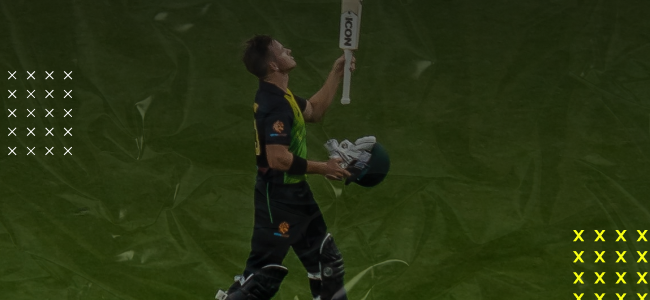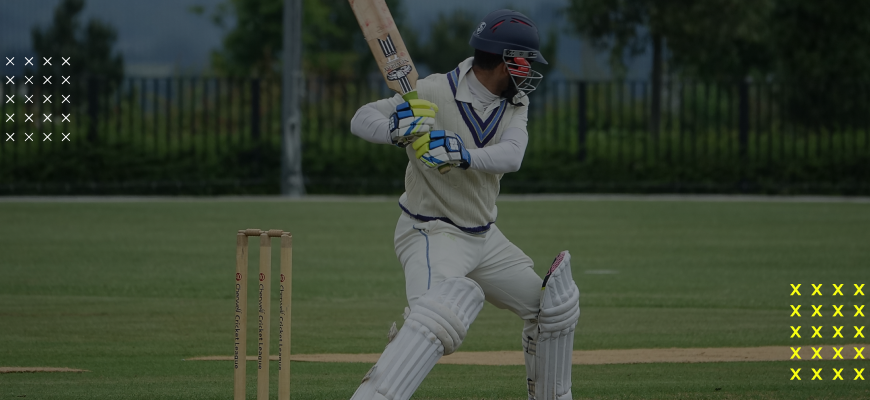In cricket, the term ‘wide ball’ is usually referred to as a delivery bowled by the bowler adjudged by the umpire if the ball passes wide or too high for the batsman to get his bat on the ball sufficiently using a normal cricket stroke.
For every wide ball, the batting team gets an extra run, and the ball is deemed illegal and hence is not counted as one of the six deliveries to be bowled inside a single over.
If the batsman connects the ball with his bat, gets out hit-wicket, or the delivery is adjudged to be a ‘no ball’ by the leg-umpire or the third-umpire, then the umpire has to revoke his decision of wide ball.

In modern cricket, it is pretty common that a batsman moves in his crease, then the ball is within sufficient reach of the batsman’s bat, and he is still not able to connect the bat with the ball, the umpire shall not adjudge a wide despite the ball being outside the ‘wide line’.
If the batsman is standing in a normal guard position, then the wide line is considered the standard for adjudging the delivery as legal or not.
In limited-overs cricket, the wide line is stringent, and the number of wide deliveries bowled adds to the extras, which is a huge factor in impacting the result of the match. In test cricket, the wide line is a subjective factor and does not have a huge impact on the result of the match.
In shorter formats like T20 cricket, huge importance is on the number of dot balls bowled by the bowlers, and disciplined wicket-to-wicket bowling is valued highly in such matches. Less wide ball number and no bowls bowled helps the bowling side restrict the batting team to a lower score and eventually tilts the result of the match in favor of the bowling team.
It is essential to understand the importance and significance of wide ball delivery in different formats of cricket before placing a bet.
Table of Contents
Why Do We Have Wide Balls?
The fact that large balls are not available is unclear as far as a beginner or aspiring cricket player goes. What’s going on with this? It helps to think of a theoretical game situation where a particular example is suggested.
This delivery (not large) has been discontinued because they are potentially better suited to bowls. It’s the same logic behind wide balls. Imagine if there were one penalty in a wide game that only required one run to be given. If the cricket team needs to avoid a limit for winning a tournament, the bowlers will probably see the ball passing wide of the striker.
Wide Ball Frequency
A broad ball in cricket is no new phenomenon, but it seems common now that the game’s over. Newer games and competition formats are no longer mainstream.
For example, in either a 1-day format or a T20 format, any ball dropped on either the foot side of the stump will generally become considered wide. Another useful comparison is how many widths have been present over the years.
The 1976 World Cricket Final saw one extra-game score. Only nine are the widest. Fast forward to 2011 and from 78 extra points scored, a stunning 46 were wide.
Records of Most Wide Balls

In international cricket, Mohammed Sami holds the record of playing out the highest number of wide balls bowled in a single over as he bowled 7 wides and 4 no-balls in a 17-ball over, giving away 22 runs in a one-day against Bangladesh.
35 wide balls is the record in a single test match held between England and West Indies as they were competing in a dead rubber 3rd test of a 3-match test series. Shannon Gabriel of West Indies bowled 11 wides, while England’s Mark Wood and West Indies’ Keemo Paul bowled 6 wides each.
In county cricket, New Zealand cricketer Bert Vance playing for Wellington against Canterbury in the 1989-90 Shell Trophy final, ended up bowling a 22-ball over, conceding 77 runs in the said over.
In club cricket, a Bangladeshi bowler, Sujon Mahmud, bowled 65 wides conceding 92 runs off 4 balls in the Dhaka Second Division Cricket League between Axiom and Lalmatia.
It was later revealed that the bowling team decided to protest uniquely against the umpiring errors overshadowing all other records previously held in recognized cricket.
Wrapping Up
To sum things up, a ‘wide ball’ is a delivery when the bowler bowls a ball and which is adjudged by the umpire if the ball is too wide or high for the batsman to get his bat on. It’s also important to mention that after every wide ball, the batting crew gets one more run and hence doesn’t count inside a single over.
While betting, one would be asked to guess the number of wide balls bowled in the match by a certain bowler or team. Whilst analyzing the same, one should remember the basic concept of wide balls and which bowlers would be involved in the match they are betting on.
To become proficient in cricket betting, we suggest you get acquainted with all the intricate details regarding its rules. We gathered the following materials to help you achieve this goal:
- How to Calculate Run Rate in Cricket?
- What Is an Inning in Cricket?
- What Is a Dot Ball in Cricket?
- What Are Boundaries in Cricket?
- What Is a Super Over?
